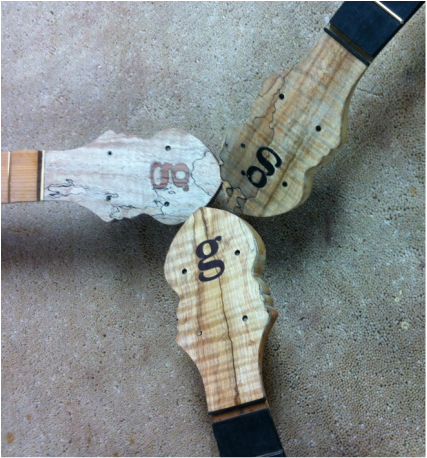ALMOST READY to start the french Polish. Just one more sanding with 600 grit and these three tenors are ready for the finish. Funny, it seems like you work on them forever, and then all of a sudden the rush to completion. Today I installed the little backing trim pieces that I like to put behind the nut. Discovered a new trick in the process
| See the little ebony strip that will separate the nut from the peg head plate? I like to put that in not only for looks but to provide a harder bearing surface for the nut than the spalted maple. The challenge is how do you trim it down almost flat so it won't interfere with the strings, and how do you trim it down without cutting either the fretboard or the peg head plate? |
Sorry, this is not a very good photo, but I laid an old credit card on the peg head plate up against the ebony strip and by simply pushing this very sharp chisel flat along the credit card I was able to trim off the edge of the ebony strip standing proud exactly the thickness of the credit card. A little touch up with sand paper and it was done.
Here are all three of the new nut strips, two ebony and one boxwood to match the fret dots.
One more sanding and it is French Polish time. I needed to mix up some more and here is how it is done. A little bottle to hold 80 ounces of Alcohol and two ounces of shellac flakes. It takes 25 hours for the alcohol to dissolve and merge with the shellac so this mix ought to be ready to use by the time I have finished the final sanding with 600 grit sandpaper. My wife's kitchen scales work really well for measuring tow ounces of these golden flakes.




